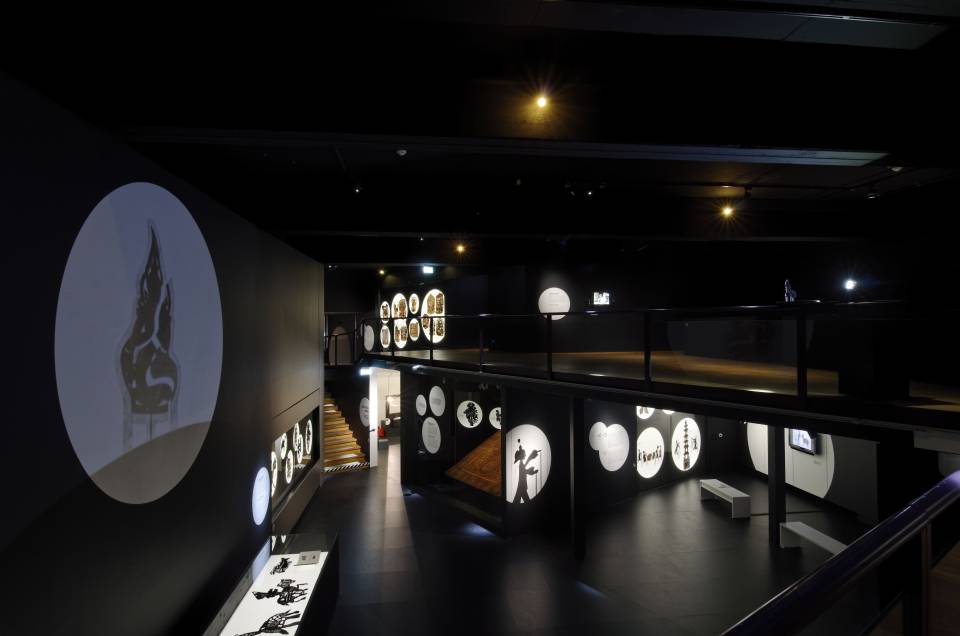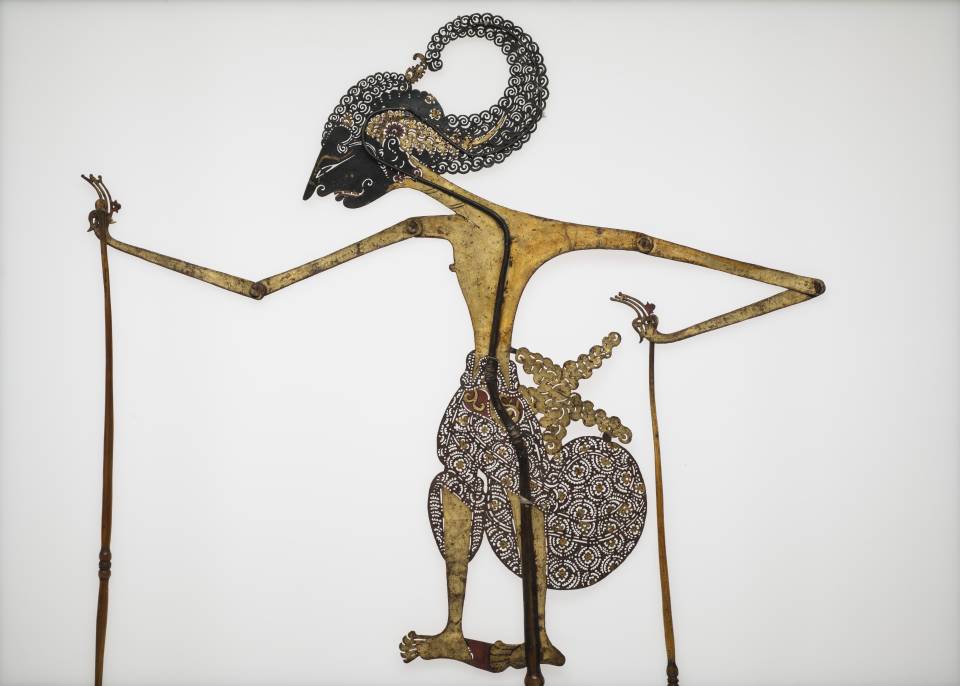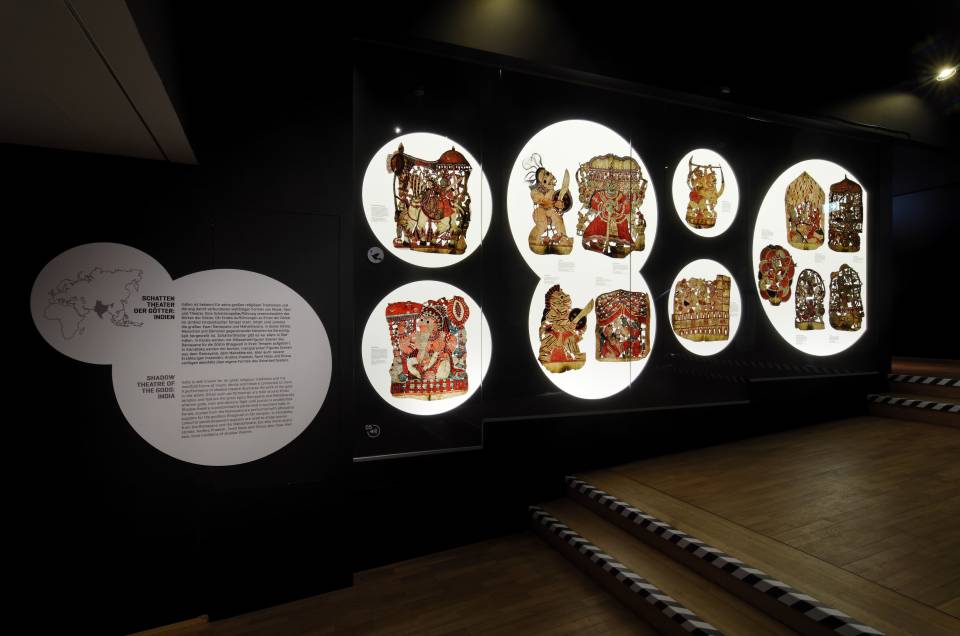Startseite > The World of Shadow Theater
The mysterious interplay of light and shadow has captivated people since time immemorial. As cultural expressions of this fascination, rich traditions of shadow theater have developed, especially in Asian countries such as China, Indonesia, and India. The exhibition used top-class collections to show the close links between the shadow theater traditions of Asia, the Orient and Europe.
In addition to the similarities in performance principles, aspects of storytelling or the typology of characters, regional characteristics of shadow theater came into focus: In India, Java and Thailand, shadow theater is also a ceremonial act in the context of temple festivals, tells great epics such as the Ramayana and is still part of cultural identity today. In China, it incorporates elements of Chinese opera such as music, costumes and masks and becomes a total experience in artistic perfection, while in the Orient it was above all a mirror of society, uniting the audience in shared laughter with great wit and humor.
The exhibition featured previously unseen pieces and rediscovered treasures from the Linden-Museum’s collection. Worthy of mention are the old stocks of Southeast Asian figures, the Chinese figures of the Eger Collection and the unique Egyptian figures of the Kahle Collection – the oldest known shadow puppets of the Islamic world. More recent collections such as the Indian figurines from the Seltmann Collection and the Turkish figurines by the well-known master Ragıp Tuğtekin (1891 – 1982) complemented these old holdings on an equal footing.
The artistic mastery and aesthetic quality of the impressive shadow puppets, which inspired artists such as Franz Marc and still fascinate today, became visible. The enthusiasm for shadow theater in Europe, which reached a final climax in the first third of the 20th century, and the further development of contemporary shadow theater, represented with loans from the International Shadow Theater Center Schwäbisch Gmünd, were also topics of the exhibition.
Atmospheric productions brought narrative traditions to life and combined them with music, song, images and film. Hands-on elements on the “Fascination of Shadows” offered young and old an exhibition experience for all the senses. The exhibition was framed by a multifaceted accompanying program.









Participation desired
In the shadow laboratory, children and families got their money’s worth by drawing silhouettes, experimenting with overhead projectors or playing on a small stage. How do I conjure up a dog with my hands? And what is behind the story of the “garbage monster”?
Children’s booklet
The popular campaign booklet was once again available free of charge at the cash desks. Children from the age of 8 got to know Flux here. The colorful bird flutters through the stages, chirps details worth knowing, introduces the children to his friends and poses tricky tasks that promise a little surprise if solved correctly.
Under the patronage of the German UNESCO Commission e.V.
Cooperation partners of the exhibition are the International Shadow Theater Center and the 10th International Shadow Theater Festival Schwäbisch Gmünd.
With kind support:
Deutsche Bahn
Media partner:
G/Geschichte
Dienstag bis Samstag, 10 – 17 Uhr
Sonn- und Feiertage, 10 – 18 Uhr
Ausstellungen
Sonderausstellungen
Dauerausstellungen